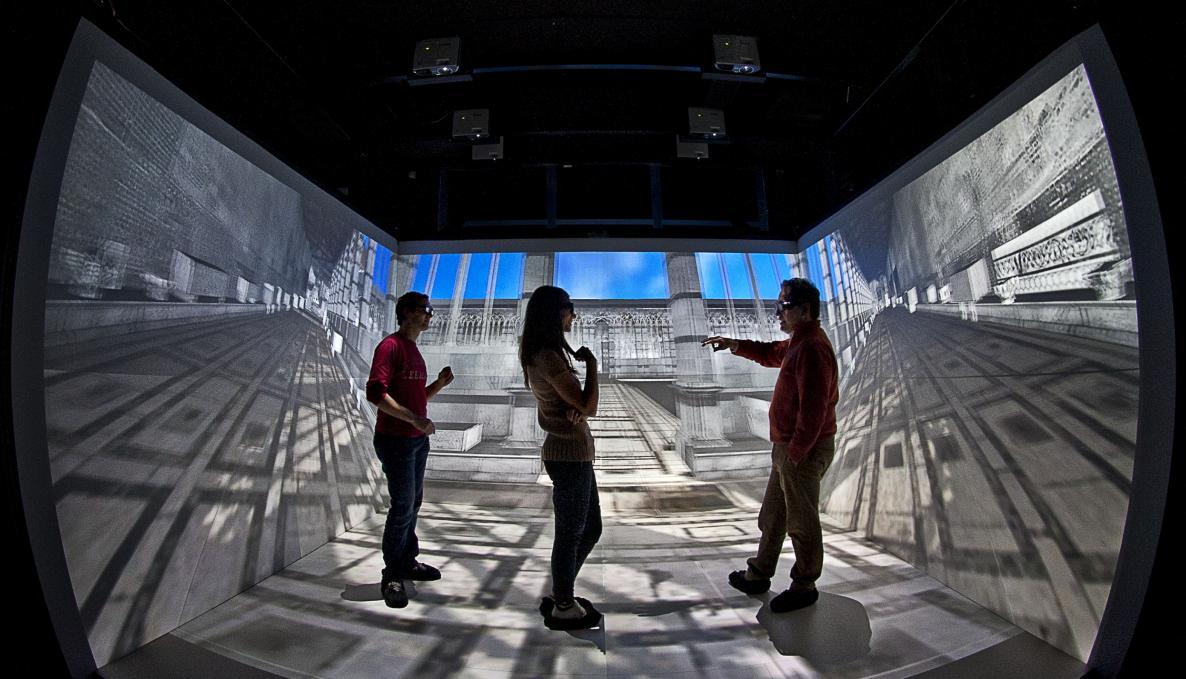Vision
The Institute of Mechanical Intelligence (IIM) was established in May 2021 bringing together the two research groups of Scuola Superiore Sant’Anna working on Perceptual Robotics (PERCRO) and Advanced Optical Sensors.

The vision that generated the creation of the new Institute deals with the future development of research in an area that is increasingly marked by the integration of physical systems with digital systems. This integration between physical and digital entities will take place not only in the field of industrial production systems (see the developments in the last 10 years of Augmented Reality), but also in everyday life. This means that the human being will have to interact and share complex real-digital environments with real and digital artificial entities that today are named as as robots, androids and virtual humans.
Regarding the development of artificial systems, at present there is great attention to the software side, as evidenced by the increasing development of artificial intelligence techniques and by the prominence such families of algorithms have received in the media.
We believe, however, that the intelligence of a machine does not lie only in the software part, which should guide the cognitive and learning component of the artificial system, but also in the hardware part, which is instantiated in the mechanical structure, in its design, in its kinematic project, in the materials used for its construction, in the systems of transmission and actuation of the movement. The conception of an intelligent artificial system cannot therefore avoid a design that, from the outset, treats the software and hardware components as non-dual, but rather as the integrated parts of a unicum.
Since 1990, the Perceptual Robotics Laboratory had a very marked tradition in the development of the mechanical and control component of robotic systems: the name of the new Institute thus stems from this tradition, which underlines the importance of studying the design of the hardware component of a robotic system. So the name of the Institute is almost in countertrend to the spread of artificial intelligence systems and is intended to emphasize the importance of the analogue component as well as the digital one.
Up to now, carrying out research relating to the mechanical or actuation component of a robotic system is much more expensive and time-consuming than developing software systems. Unfortunately, this issue has been acknowledged only partially and by a few research groups.
Additionally, the Perceptual Robotics Laboratory has demonstrated a great competence, perhaps unique in the European research panorama, regarding the development of Immersive Virtual Environments and Mixed Reality systems. Also these skills will contribute to define the characteristics of the artificial systems of the future, e.g., virtual humans and avatars, with which real humans will be called on to interact.
Consequently, a further objective of the Institute of Mechanical Intelligence concerns the study of the interaction between humans and artificial systems, which will become an inevitable condition in the near future, in every context of the society. Clearly, the study of the interaction between human beings and artificial entities requires a multidisciplinary approach which needs skills beyond engineering, such as those related to neuroscience, cognitive science and experimental psychology. Collaborations in these research fields are currently underway and there are plans to intensify them, considering also the integration of researchers coming from outside the engineering context.
All of this highlights the importance in the vision of the Institute of Mechanical Intelligence of trying to remove the duality between scientific studies and humanities in the near future. I hope that the Institute of Mechanical Intelligence can be a place where, starting from the development of artificial systems, the complexity of human nature can be studied with a future-oriented interdisciplinary approach.
